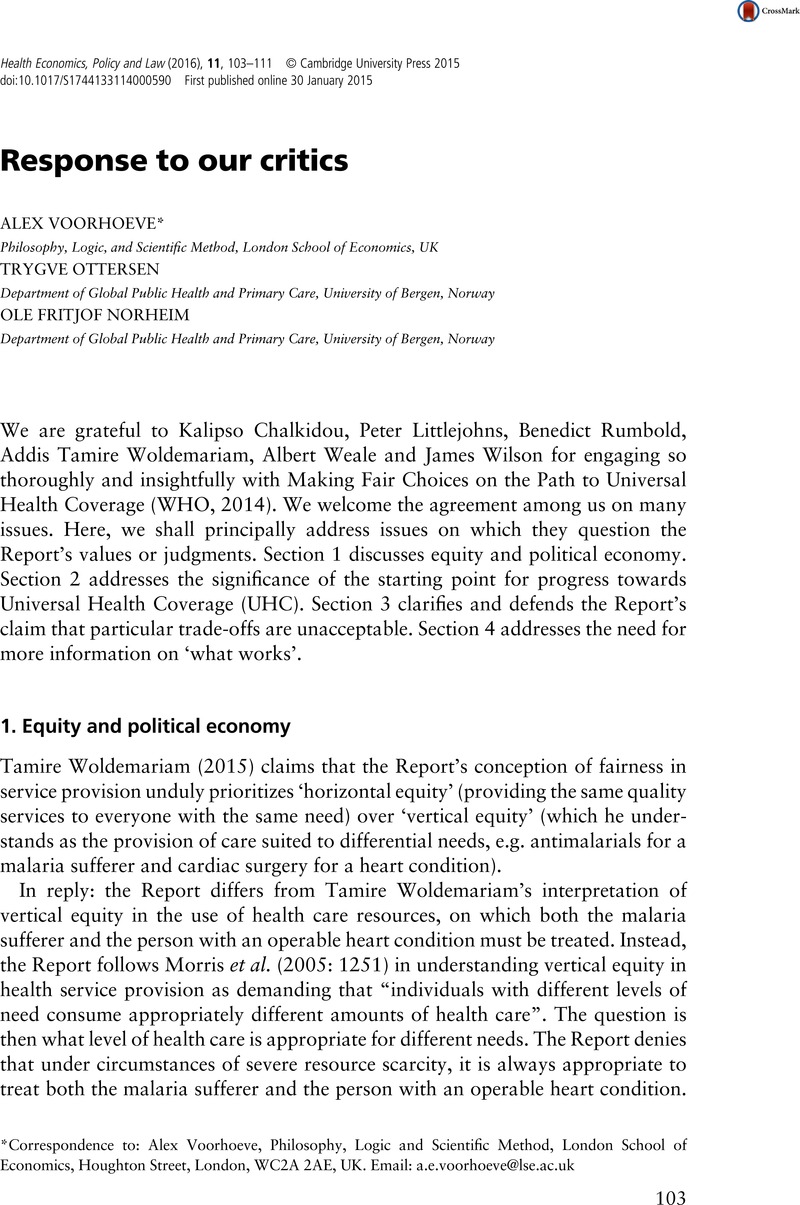Crossref Citations
This article has been cited by the following publications. This list is generated based on data provided by Crossref.
Voorhoeve, Alex
Tan-Torres Edejer, Tessa
Kapiriri, Lydia
Norheim, Ole Frithjof
Snowden, James
Basenya, Olivier
Bayarsaikhan, Dorjsuren
Chentaf, Ikram
Eyal, Nir
Folsom, Amanda
Halina Tun Hussein, Rozita
Morales, Cristian
Ostmann, Florian
Ottersen, Trygve
Prakongsai, Phusit
Saenz, Carla
Saleh, Karima
Sommanustweechai, Angkana
Wikler, Daniel
and
Zakariah, Afisah
2017.
Making Fair Choices on the Path to Universal Health Coverage: Applying Principles to Difficult Cases.
Health Systems & Reform,
Vol. 3,
Issue. 4,
p.
301.





